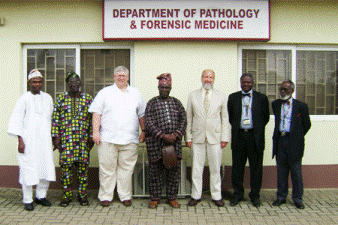Natural Resources, School of

Karl Reinhard Publications
Document Type
Article
Date of this Version
2008
Citation
MUMMIES AND SCIENCE. WORLD MUMMIES RESEARCH, 2008
Abstract
In prehistoric populations the paleoparasitological findings show an Enterobius vennicularis homogeneous distribution among North American hunter-gatherers intensified with the advent of agriculture. The same occurred in the transition from nomad hunter-gatherers to sedentary farmers in South America, although E. vermicularis infection encompasses only the ancient Andean peoples. Since molecular techniques are sensitive in detecting ancient DNA (aDNA), in this work we have performed a molecular paleoparasitological study of E. vermicularis. aDNA was recovered from North and South American coprolites (4110 BC-AD 900). Human (cox 2 and HVR) and pinworm (5S rRNA spacer) sequences were determined. The sequence analysis confirmed E. vermicularis identity and revealed polymorphisms in independent coprolite samples from Tulan, San Pedro de Atacama, Chile (1080- 950 BC). We were successful in detecting E. vermicularis aDNA even in coprolites without direct microscopic evidence of the eggs, improving the diagnosis of helminth infections in the past and further pinworm paleoepidemiological studies.
Included in
Archaeological Anthropology Commons, Ecology and Evolutionary Biology Commons, Environmental Public Health Commons, Other Public Health Commons, Parasitology Commons

